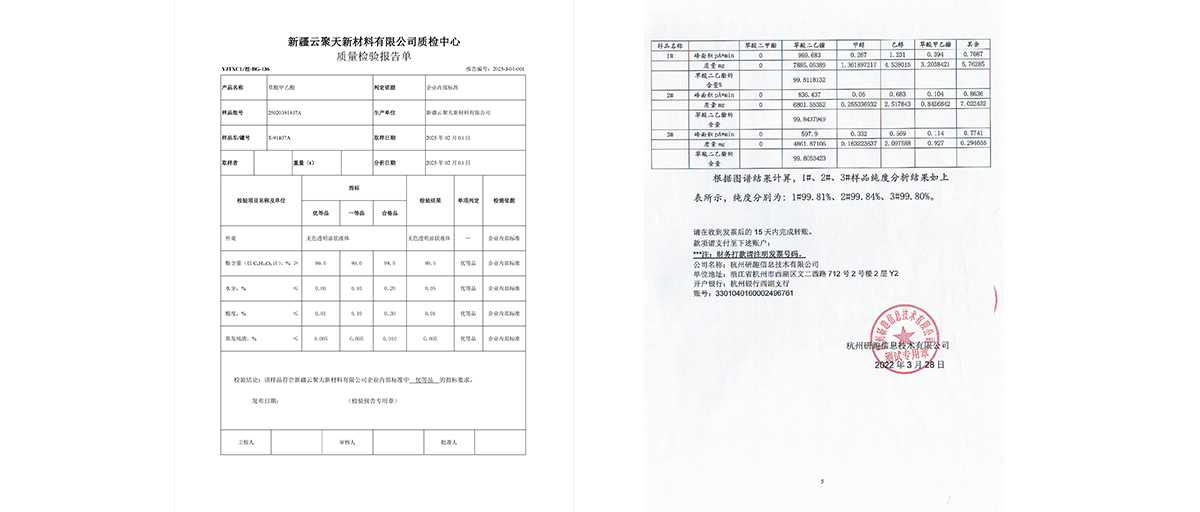Raw material testing 1. Supplier qualification review: Strictly review the production license, business license, product quality certification and other qualifications of raw material suppliers to ensure that they have legal and compliant production and operation conditions. 2. Appearance inspection: Check the appearance characteristics of the raw material such as color, shape, odor, particle size, etc., and determine whether there are any abnormalities, such as uneven color, clumping, and odor. 3. Component analysis: Use chemical analysis, spectral analysis, chromatographic analysis and other technical means to accurately determine the chemical composition of raw materials to ensure that they meet the procurement specifications. 4. Purity detection: determine the content of the main components in the raw materials, detect the types and content of impurities, and evaluate whether their purity meets the standards. 5. Physical properties detection: Detection of the physical properties of the raw material such as density, melting point, boiling point, flash point, pH value, etc., and determine whether it meets the standards. |
|
Testing in production 1. Intermediate product testing: At key nodes in the production process, intermediate products are sampled and tested, such as reaction intermediates, semi-finished products, etc., to ensure the stability of the production process and the consistency of product quality. 2. Process parameter monitoring: Real-time monitoring of process parameters such as temperature, pressure, flow rate, reaction time during the production process to ensure that they are within the specified range and ensure the normal operation of the production process. 3. Impurities and by-product detection: analyze the generation of impurities and by-products in intermediate products, control their content, and avoid adverse effects on the quality of the final product. 4. Stability testing: Conduct stability testing of intermediate products to examine their quality changes under certain time and conditions, and provide a basis for production process control. |
|
Re-test out of the warehouse 1. Full inspection: According to product standards, comprehensive quality inspection of hazardous chemicals that are about to be out of stock, including component analysis, purity detection, physical properties detection, limited amount of hazardous substances, etc. 2. Packaging inspection: Check whether the packaging of the product is intact, whether the packaging materials meet relevant standards and requirements, whether the labels are clear, accurate and complete, including product name, specifications, production date, shelf life, hazardous characteristics, safety warnings and other information. 3. Sample retention and testing: Sample retention is carried out on each batch of out-of-stock products for subsequent quality traceability and review. Samples should be stored in accordance with the prescribed conditions and tested regularly to ensure the quality stability of the product during the shelf life. 4. Compliance review: Check whether the product complies with relevant national and local laws, regulations, standards and quality requirements stipulated in the contract to ensure that the product is legal and compliant on the market. |
|
Production test report
